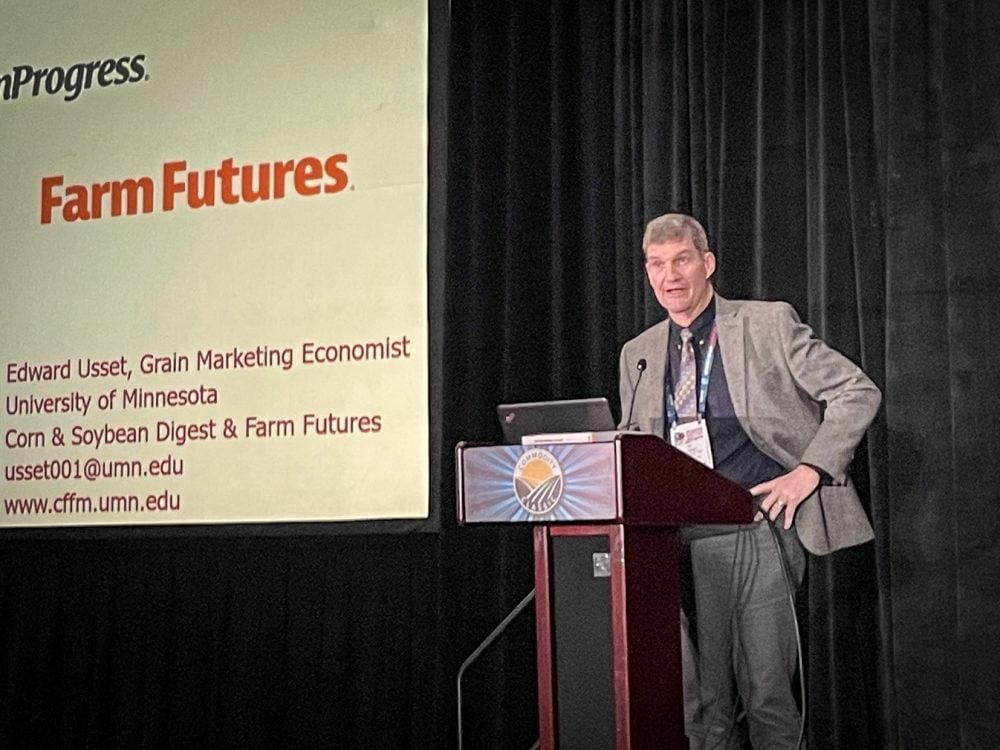Glacier FarmMedia — American corn growers are on pins and needles waiting to find out if corn ethanol will qualify for a lucrative sustainable aviation fuel tax credit.
They expected an announcement at last week’s 2024 Commodity Classic convention, the annual gathering of U.S. corn, soybean, wheat and sorghum growers.
But that didn’t happen. U.S. secretary of agriculture Tom Vilsack told growers the government needs more time to sort things out.
He said the announcement will come in a matter of weeks rather than months.
Read Also


Commodity Classic: ‘Strong evidence’ for old crop price rally says economist
Old crop corn and soybean prices in the United States will likely rally this spring, according to an agricultural economist.
Vilsack did deliver some good news for growers.
“I’m confident now that indeed the GREET model will be part of the guidance that will be provided by Treasury,” he said.
GREET is an acronym for the Argonne National Laboratory’s Greenhouse Gases, Regulated Emissions and Energy Use in Transportation lifecycle model for assessing greenhouse gas emissions.
It is a model developed by the U.S. Department of Energy.
American corn farmers are relieved that GREET will be one of two models available for determining which feedstocks are eligible for the lucrative SAF tax credits contained in the U.S. Inflation Reduction Act.
The other model is the European International Civil Aviation Organization (ICAO) model.
“Corn would never qualify under that model,” said Harold Wolle, president of the National Corn Growers Association.
“That’s why we’re supporting the GREET model.”
There is a lot at stake because the SAF tax credit amounts to US$1.25 per gallon for each gallon of SAF in a qualified mixture.
The U.S. government has set a target of having three billion gallons of domestic SAF production by 2030, up from 10 million gallons today.
Most of the biofuel buzz in agricultural markets has surrounded soybean oil being used to make renewable diesel.
However, Wolle said the SAF market for corn ethanol could be massive as well.
He noted that corn ethanol is selling for about $1.50 per gallon in the U.S. versus the typical gas price of $3 per gallon, so it is a very competitive fuel on its own accord.
Soybean-based renewable diesel is far more expensive than conventional diesel by comparison, so it is a market that is completely reliant on tax credits.
Wolle also noted that it takes about 1.6 to 1.7 gallons of ethanol to make one gallon of jet fuel, so that three-billion-gallon market for SAF is even bigger than it sounds.
Vilsack said he is keen on ensuring that as many feedstocks as possible qualify for SAF production.
He said it took a lot of convincing by him and others to ensure that the SAF Interagency Working Group understood the importance of embracing the GREET model.
The next step is ensuring that the working group uses the most current data to make sure the GREET model concludes that corn ethanol meets the threshold of reducing lifecycle GHGs by at least 50 percent.
“It’s complicated and we’re working through it,” Vilsack told reporters following his speech to delegates.
Wolle said the U.S. corn industry desperately needs a new source of demand because right now there is too much supply of the crop, which is causing prices to crash.
“It’s the bright, shiny light on the horizon,” he said.
“We need to have more usages for corn.”
That is why he wants Vilsack and other government leaders to get it right rather than rushing the decision.
—Sean Pratt writes for the Western Producer.




